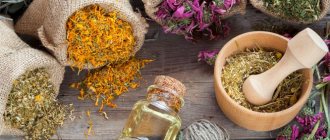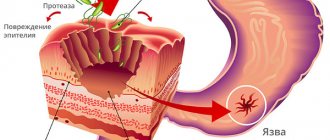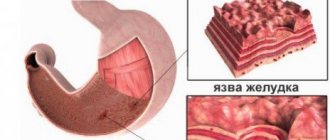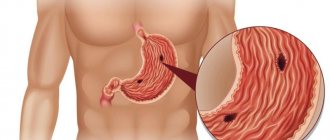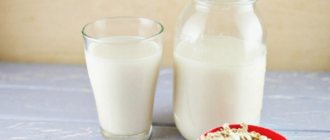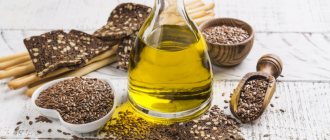Should you believe the advertising?
All entrepreneurs are concerned with one goal - to make money. Of course, this is facilitated by advertising. Consumers understand this mechanism well. This is why people think about the question: are advertising messages true or a scam? Monastic tea is presented as a cure for all diseases, which raises understandable doubts.
Much depends on the individual characteristics of the person himself. Some believe everything that is posted in the media about monastery tea. Is everything they say about him true or a scam? Have the monks really invented a fantastic medicine that can cure almost all ailments? Why then do they themselves die from diseases? Maybe tea doesn’t help with everything, but it copes well with diseases of the gastrointestinal tract?
To understand, you need to thoroughly study the composition. Of course, on sales sites there are beautiful legends that the monks of ancient monasteries have been collecting secret knowledge for centuries, which today makes it possible to treat all diseases without pharmaceuticals. But it is naive to believe that the secrets of medicinal plants remain sealed. Analyzing the composition, we will return to this later. So, gastric monastery tea is a herbal mixture that is designed to restore the natural functions of the gastrointestinal tract. How well this works is a moot point. Let's try to figure this out together.
Ready herbal teas
Let's look at the most popular industrially produced drinks. They have a complex composition and act in several directions at once.
Gastrointestinal herbal tea No. 20
One of the most versatile options. Suitable for any form of gastritis, and is also used for peptic ulcers and intestinal disorders. The composition includes herbs that predominantly have anti-inflammatory, antibacterial, antispasmodic properties: chamomile, St. John's wort, mint, senna, elecampane, dill, flaxseed.
Since the combination of these plants also affects the cardiovascular, nervous and endocrine systems, you should consult a doctor before drinking the drink.
Brew 1 sachet of herbal tea in a glass of boiling water, drink 200 ml after cooling three times a day.
Herbal tea "Sennapharm"
Contains senna, plantain and fennel seeds, therefore it is intended primarily for patients with hypoacid, atrophic gastritis.
It eliminates bloating, congestion in the stomach, and improves appetite. Accelerates the healing of erosions due to the action of plantain. For hyperacid inflammation, the use of tea is also possible, but the effect will be less pronounced.
For a glass of water, one sachet of tea leaves is enough, which is infused for 15 minutes. The resulting drink is drunk with meals once a day.
Monastic stomach tea
Herbal mixture intended for the treatment of gastritis of any form. Contains horsetail, peppermint, immortelle, chamomile, hawthorn, yarrow. Helps with inflammation of the stomach of an infectious nature due to its antiseptic effect. Reduces the severity of the inflammatory reaction of the mucous membrane and the unpleasant symptoms associated with it: pain, belching, heartburn, nausea.
A teaspoon of the herbal mixture is poured into a glass of boiling water, left for 30 minutes and drunk throughout the day.
However, keep in mind that all the “official studies” that the manufacturer of the monastery tea refers to are falsifications, as Elena Malysheva talked about in her program.
This revelation does not mean that the drug is completely useless, but only indicates that its benefits are exaggerated and there have been no clinical studies of its effectiveness.
Siberian Health: “Kuril Sai”
The basis of the drink is Kuril tea or cinquefoil. When brewed, the plant has a pleasant, slightly tart taste. It is traditionally used to normalize the functioning of the gastrointestinal tract. Plantain, rosehip, rosehip and chamomile are also added to Kuril Sai tea.
This combination is most effective for erosive gastritis, especially provoked by stressful situations. Cinquefoil tones and calms the nervous system. In addition, the drink is used for diseases of the intestines and bile ducts.
“Kuril Sai” is brewed and drunk in the same way as monastery tea: it is enough to take only 1 glass of the drink per day.
Tea "Evalar BIO gastrointestinal"
A well-balanced herbal tea with the “safest” ingredients: mint, chamomile, dill, yarrow and black tea.
They rarely cause side effects in other organs. Tea helps best with insufficient secretion of hydrochloric acid. You should drink it with increased acidity with caution, as black tea further stimulates the production of HCl.
Take 1 filter bag per glass of water and drink tea 5 minutes after brewing.
Relevance of the issue
Why did monastery stomach tea begin to gain popularity? There are a number of reasons for this. Today, more and more people suffer from stomach and intestinal diseases. This is due to changes in the quality of food, as well as a lot of stress that haunts us every day. Stomach diseases are not only the discomfort that we experience during or after eating. What happens in the digestive organs has a huge impact on the general condition of a person. Therefore, it is necessary to find a solution to the problem. It is advisable to do this quickly, cheaply and without unnecessary trips to the doctors.
It is understandable why monastic stomach tea is becoming increasingly popular. This healing drink, prepared according to ancient monastic recipes, allows you to heal at home. In addition, this “medicine” is very tasty and pleasant. It is a pleasure to be treated with them.
Herbs for heartburn and heaviness
Food that sits in the stomach for a long time can cause unpleasant heaviness. If the acidity inside the stomach is increased, heartburn may occur.
There are herbs that can help relieve these symptoms if you choose them correctly. The following plants can be the main helpers in such a situation:
- Chamomile flowers. By brewing them, you can get rid of pain and spasms. By clearing the bile ducts, chamomile stimulates the digestive process, and this can eliminate heaviness;
- Calamus root. Can relieve heartburn, and also stimulates processes that increase appetite;
- Rose hip root. It triggers the stimulation of enzymes and gastric juice;
- Celandine. This plant can reduce the concentration of juice in the stomach and reduce the symptoms of heartburn;
- Celery root. Prevents increased levels of stomach acid, which causes heartburn.
Features of collection
It is difficult to say what is more effective, tablets or medicinal herbs. This question is best answered by practicing doctors. As can be understood from their statements, almost all active ingredients that are used in concentrated and purified form for the production of tablets are obtained from plants. Some substances today are synthesized artificially, but they are analogues of natural extracts.
It turns out that whether you drink monastery tea for the stomach or tablets to treat gastritis or pancreatitis, the result will be the same. But this is not true at all. The fact is that we know exactly the amount of active substance in the tablets. Its effects have been clinically tested. How much of one or another component is contained in the decoction is always a question. To answer it, you need to know the growing conditions of herbs, the timing of their collection, storage features and even the brewing temperature. There are too many variables that are very difficult to test. If we discount this, then monastery tea for the stomach can be considered an effective remedy that fights gastrointestinal ailments and makes you feel better.
Another important criterion that must be taken into account is the concentration of the active substance. Everyone knows that in a tablet it is much higher than in a decoction. Therefore, doctors advise using folk remedies only in complex therapy. In other words, for the decoction to have the same effect as a pill, you need to drink a lot of it or use it for too long (months and years)
Contraindications and unwanted effects
Monastic tea for the stomach should not be used if you have an individual intolerance to at least one of the components, pregnant and lactating women, children under 6 years of age, or bronchial asthma. Adverse adverse reactions occur extremely rarely, and most often occur when the proportions are not observed when mixing the components independently. It should be borne in mind that rose hips can increase acidity, long-term use of St. John's wort and knotweed leads to constipation, and chamomile leads to blood thinning, which is not useful for ulcers. Excessive concentration of yarrow in tea causes heartburn and nausea.
Experience of generations
What is the disadvantage of most treatment regimens practiced today? They affect the symptoms, but do not touch the disease itself. That is, a person really feels better, but as soon as the course of treatment is stopped, unpleasant symptoms begin to make themselves felt again.
Monastery tea for stomach diseases in some cases can act as the main treatment or complement therapy. For chronic diseases, herbs can be consumed on an ongoing basis, which will help maintain the gastrointestinal tract in a normal state. This is confirmed by the experience of many generations of people who have personally experienced the effects of tea.
Nature's help
Gastric monastic (intestinal) tea will help normalize digestion, remove the symptoms of dyspepsia, and restore the body’s weakened strength. Problems with the stomach and intestines have always existed. The properties of medicinal plants have long been used to treat the digestive system. Herbal medicine was widely practiced by monastic doctors. Gradually, accumulating knowledge of the medicinal properties of individual herbs, the monks compiled healing mixtures that helped defeat diseases. This is how the composition of the monastery collection was selected for the treatment of diseases of the digestive system.
This collection will help restore health even after an ulcer thanks to the vitamins, amino acids, minerals and special tannins contained in green herbs
The components of the collection have an anti-inflammatory, healing, and choleretic effect. Plants collected in ecologically clean areas contain essential vitamins and microelements, providing a general tonic and strengthening effect on the body.
The ancient monastery recipe was traditionally considered the best assistant in the fight against peptic ulcers and gastritis. The effectiveness of the collection has been proven for all known diseases affecting the intestinal tract:
- ulcers of the stomach, duodenum;
- hyperacid, atrophic, drug-induced gastritis;
- enteritis, colitis, enterocolitis;
- stool disorders (prolonged constipation, diarrhea);
- enzymatic deficiency (improvement was noted in patients taking tea for pancreatitis);
- intestinal infections, dysbacteriosis.
After the first use, stomach tea reduces the unpleasant symptoms of digestive problems: pain, heartburn, a feeling of bitterness disappear, and flatulence (bloating) decreases. To obtain a noticeable therapeutic effect on health, regular use of the medicinal collection is necessary for at least 2-3 weeks.
Achieved effects
As confirmed by reviews, the use of a herbal decoction can relieve pain caused by gastritis or stomach ulcers. At the same time, heartburn is eliminated. Just 15 minutes after taking it, the pain subsides. In addition, tea provides a number of other effects:
- Allows you to improve the functioning of all gastrointestinal organs and restore appetite.
- Restore the production of gastric secretions and enzymes. This may be especially true after illness.
- The herbal components included in the composition allow you to cure stomach and duodenal ulcers, chronic gastritis, bacterial and fungal infections of the gastrointestinal tract.
- Regular consumption allows you to get rid of constipation and diarrhea, intoxication of various origins, colitis and dysbacteriosis.
As you can see, there are many indications for the use of gastric monastery tea. But you shouldn’t think that one herbal tea can solve all problems. For therapy to be effective, you must first undergo a diagnosis and figure out what exactly you will be treating. Herbs have proven themselves very well in complex therapy.
Therapeutic effect on the gastrointestinal tract
In order to get rid of toxins, a person needs to drink a lot of liquid. It’s even better if the choice is in favor of herbal infusions.
A decoction made from herbs helps to improve the health of the entire gastrointestinal tract system. It can increase or decrease stomach acid levels, help heal wounds and inflammation, and soothe heartburn.
Herbal decoction
Some herbs can help with diarrhea and constipation, cleanse the body in case of poisoning, and also normalize the microflora and relieve the discomfort associated with flatulence.
What's included
Monastic stomach tea is a collection of medicinal herbs, each of which has a direct effect on the gastrointestinal tract. To understand how this happens, you need to take a closer look at each component separately. All herbal components of tea are very beneficial for the stomach, intestines and esophagus. And all together they provide a comprehensive therapeutic effect. This is precisely what explains the high efficiency of this collection. It is difficult to say in absentia whether monastic stomach tea helps with ulcers. It depends on the etiology and course of the disease. But he can definitely alleviate the patient’s condition.
Tea not only fights the symptoms, but also the cause of the disease. Moreover, medicinal herbs allow you to restore the body’s strength and prevent the development of relapses.
Tea for the stomach for various types of inflammation
The selection of medicinal tea depends on the type of inflammation and the condition of the gastric mucosa.
For anacid atrophic gastritis, it is important to choose tea that would restore the mucous membrane, have enzymatic activity, and reduce the severity of inflammation. Chamomile, calendula, centaury, and horsetail are characterized by the necessary properties.
The ability of the drink to stimulate gastric secretion in this case is less relevant, since in the later stages of the disease there is practically no glandular epithelium left in the mucosa and there is simply nothing to stimulate.
Patients with hypoacid gastritis first of all need to increase the acidity of gastric juice and stimulate the production of hydrochloric acid. Classic black and green tea, rose hips, currant leaves, wormwood, and calamus rhizomes have this ability. Peppermint is also useful, as it removes the symptoms inherent in a hypoacid state: nausea, vomiting, loss of appetite, flatulence.
Hyperacid gastritis is the most “fastidious” regarding herbal medicine.
With increased secretion of HCl, drinks that increase acidity are contraindicated. On the contrary, priority is given to plants that suppress the production of hydrochloric acid or neutralize already released hydrogen chloride. These are peppermint, agrimony, St. John's wort, fireweed. Fireweed (better known as fireweed) also has protective, enveloping properties.
For erosive gastritis, plants with astringent, hemostatic, enveloping effects are widely used: plantain, sage, fireweed, yarrow. Herbal teas based on them accelerate the healing of erosions, protect them from the aggressive effects of hydrochloric acid and prevent bleeding.
Components
Stomach tea according to the monastery recipe is a multi-component collection. Let's look at each of them:
- Calendula flowers. A decoction of these bright flowers, which are popularly called “marigolds,” perfectly helps patients even with advanced forms of gastritis and stomach ulcers. Therefore, we can say that their inclusion in tea is completely justified. In addition, calendula helps fight intoxication and improves appetite.
- Fennel seeds. Another required component. Tea regulates the secretion of gastric juice and strengthens the intestines. This is not the only reason why the plant was included in the collection. It is used as a sedative and has a beneficial effect on the activity of the central nervous system. But gastritis and ulcers very often appear precisely because of nervousness.
- Dog-rose fruit. Many people know that these bright red berries are a source of vitamins and minerals. Rosehip also has a choleretic effect.
- Chamomile flowers. This plant is known to absolutely everyone. Chamomile flowers can be easily purchased at any pharmacy. The plant is extremely useful and is used for a hundred ailments. It can relieve intestinal spasms and eliminate indigestion.
- Peppermint. It is rich in essential oils and menthol, which increases bile production. This component provides a strong analgesic effect, reduces fermentation and putrefactive processes.
- Flax seeds. They are famous for their enveloping and anti-inflammatory properties.
- St. John's wort. Normalizes gastric secretion.
- Plantain leaves. An excellent anti-inflammatory agent.
- Horsetail. Gastroenterologists prescribe it quite rarely in the complex treatment of poorly healing ulcers, as well as for the treatment of tumors.
- Sagebrush. Effectively enhances intestinal motility, relieves colon spasms, and increases appetite.
- Yarrow flowers. A decoction of the plant's inflorescences stops bleeding and reduces flatulence.
As you can see, the composition is very complex. This is what makes it possible to have an effective effect on a wide variety of gastrointestinal diseases. But a large number of components simultaneously increases the risk of developing an allergic reaction and individual intolerance.
Monastic stomach tea No. 9 contains the following components: rose hips, mint, wormwood, yarrow, horsetail, flax seeds, St. John's wort, calendula and marsh grass.
Stomach tea: reviews and recipes for preparing the drink
The drink is easy to make at home. The components for it are sold in pharmacies. But it is important to know that this tea has different reviews regarding its use. This is explained by the fact that with an increase in components, the risk of developing allergic side effects increases.
Basically, these drinks are taken for a long time; single use does not bring results. Although the therapeutic effect does not develop as quickly as we would like, it persists for a long time.
Recipes for making stomach teas
Depending on the problem, the composition of the folk remedy will change. The right combination of components can not only alleviate the patient’s condition, but also lead him to a complete recovery. It should be noted that patients who have had the opportunity to drink stomach tea leave reviews about the drinks that are mostly positive.
- Anise tea to normalize gastrointestinal functions For 200 ml of boiling water you will need 5 g of anise seeds. The plant is filled with water in a thermos, infused for 3 hours, and filtered. Take 100 ml before meals.
- Tea for stomach pain You can eliminate spasms, as well as pain, by mixing St. John's wort, licorice root, chamomile, flax seed, so that a total of 1 tbsp is obtained. l. composition. These herbs are poured into 200 ml of boiling water, then left in a water bath for 5 minutes. Cool and strain. Take 1 glass at lunchtime and evening.
- Stomach tea for hyperacid gastritis In equal quantities you need to mix licorice root, peppermint, calamus root, linden blossom, flax seeds, fennel seeds. Pour 1 tbsp into 15 g of mixture. warm water, cover and let stand for 2 hours. Next, boil and cool. Take after meals.
- Anise tea for gastritis due to nervous disorders 1 tsp. anise seeds pour 1 tbsp. boiling water, infuse for 10 minutes, strain. Take 2-3 times a day, 1 cup.
- Stomach tea for hypoacid gastritis Mix calamus roots, peppermint leaves, licorice roots, fennel and flax seeds, and linden flowers in equal proportions. Add a glass of warm water to 15 g of the mixture, mix, cover, leave for 2 hours, then bring to a boil and leave to cool. Filter and take after meals.
- Tea for pancreatitis To treat the disease you will need coltsfoot leaves and elecampane root. The components are mixed in equal quantities. 1 tsp. the composition is poured with 200 ml of boiling water and infused. Taken 3 times a day before meals for 3 months.
How to use tea
Monks need to manually harvest medicinal herbs throughout the season, dry them in a certain way and combine various herbs. Based on the composition, diseases that could be treated with the help of the collection were determined. Today, the consumer’s task is much simpler. We just need to choose the appropriate collection in pharmacies. Monastery tea is affordable and sold everywhere.
But this is where the difficulty lies. What is on pharmacy shelves today and offered in online stores does not always meet the requirements. It is quite possible that there will be nothing harmful in such fees. But mowed and dried herbs are not always able to provide a medicinal effect on the body. You can only check the quality of raw materials on your own health.
Reviews about the treatment of the gastrointestinal tract with Ivan tea
Listen to the audio review of Sergei Golikov from Kovrov about how he managed to cure his stomach, heartburn, skin rashes and chronic fatigue with the help of medicinal fireweed herb, and pay attention to the time period during which the medicinal herb helped him:
Hello, dear listeners. My name is Sergey. I am 30 years old, I am a former military man and I spent most of my youth studying military science. 5 years of cadet life, 5 years of military regime, all sorts of unhealthy diets, dry food, outfits, you understand. All this led me to think that my health really did not meet the requirements of a young guy.
And accordingly, I began to think about what I should do, how to start a healthy lifestyle and in which direction I should move. I first started searching on the Internet, reading certain books related to herbs, medicine, and learning a lot of new things. And of all the herbs I can single out...
Click on this line if you want to read Sergei’s review in its entirety; for convenience, we have collapsed it
…blooming Sally. Today we will probably talk more about fireweed, as it has helped me improve my health.
During my studies, over the course of 5 years, I realized that I:
- got myself gastritis,
- I have developed fatigue, which absolutely prevents me from living,
- and skin rashes, like most young people who we thought were in adolescence.
But in fact, as it turned out, the problem is different. I went to all kinds of nutritionists, excluded certain dishes from my diet, but still it all came back - gastritis, heartburn, fatigue. All this did not leave me.
On the Internet I found a lot of information about fireweed, I found a lot about all kinds of Chinese teas.
How the Chinese buy raw materials from Russia, then resell them, they call it our Ivan tea, “tea for a thousand diseases.” And I realized one thing: this tea is called Ivan-tea, they just wrote a different name on each package.
I read a lot of useful information that it really cures all diseases, it does not have a specific course, you can drink it every day, and all this stuck with me, and I decided - yes, I need to try it, I need to start somehow.
It was hard to run around the shops, look for Ivan tea; at one time it was not available in all stores anyway. It was in certain tea shops where it was very expensive and there wasn't much of it. In the end, I bought it, brewed it, you don’t need to brew it like regular tea - take it, throw it away. Brewed - took it, drank it. You need to brew it for at least 10 to 20 minutes. This is the only way it begins to activate all processes when drinking. You need to know the process exactly; I also recommend that you inquire about how to brew fireweed tea correctly.
Introduction to medicinal fireweed
Specifically to myself - my first acquaintance with fireweed came when an acquaintance of mine invited me to collect fireweed. It was early in the morning, at 5 am, we woke up, and before the dew disappeared, at sunrise we collected fireweed, dried it, ground it, laid it, fermented it for 38 hours. Then they dried it, and then shared it. And since then, I have been drinking fireweed tea for 5 years.
What I want to say about my gastritis, skin rashes and fatigue - I couldn’t cure it with anything.
All kinds of ointments, all kinds of pills that could stop it, but not stop it completely - all this haunted me. And from the moment I started taking Ivan tea, I realized that in the third month my fatigue stopped bothering me , because I actually had more energy. I started to analyze why.
Firstly, there is no caffeine in Ivan tea, and accordingly, when you drink it very strong, it does not cause any harm and really tones you up. Probably, it can be classified as coffee, but coffee contains caffeine, you can’t consume it a lot, it will still have a detrimental effect on your health.
Accordingly, I like very strong tea. And I realized that my fatigue was going away, and my energy was just starting to grow. The rash on my skin began to go away around the sixth month , the skin is actually being cleansed of toxins, I can feel it.
I also began to study not just drinking tea, but all kinds of lotions, locks, rubbing the skin with fireweed tea, a strong infusion, of course. You can add it and brew it with birch leaves. Such small mixes helped me get rid of skin rashes.
About the treatment of gastritis with herbal tea
Gastritis is, of course, a serious illness that goes into different stages, I swallowed a lot of all kinds of light bulbs, all sorts of gels that stopped this matter. But fireweed tea really, with its vitamin C content, had a positive effect on the gastric mucosa. And within 5 years I completely got rid of this; in about the third year of drinking Ivan tea, I had no heartburn, no pain, no cramps of any kind in my stomach . The unpleasant sensations all really disappeared.
I used fireweed tea both in its pure form and with the addition of additional herbs - tansy, birch leaves, by the way, currants, raspberry leaves. All this in general enhances the properties of Ivan tea.
The most important thing, probably, when you collect fireweed yourself and use it for treatment, you must understand that this tea is free of pesticides and is not chemically processed. Because all the factories that deal with tea treat their teas with pesticides, and accordingly, this has a detrimental effect. These are bagged teas, all kinds of Chinese teas in beautiful packages. I used to really pay attention to them, I thought they were a natural, high-quality product. But as all sorts of books and the Internet say, there are a lot of pesticides there. And we really, without even suspecting it, drink tea. Yes, it’s delicious, but we actually cause harm, and this causes all sorts of stomach ailments, which manifests itself on the skin, of course. This also affects our fatigue.
While drinking fireweed, I got rid of three specific ailments: gastritis, skin rash, and my fatigue. So, I wish you all good health, and drink Ivan tea - this is really our Russian heritage, which everyone wants to try. All the best, goodbye.
Another review in audio format, from a resident of Kaliningrad, Klavdia Bondarenko, about how she cured her chronic gastritis with medicinal “fire” herbs, and for her it turned out to be a “bonus”, as an addition to kidney treatment:
Antonina from Kaliningrad tells her recipe for preparing an infusion of fireweed tea for treating the gastrointestinal tract:
Stanislav Butusov and Anna (Ukraine) speak of fireweed tea as an excellent remedy for normalizing intestinal function:
We recommend watching a 15-minute video in which Elena Malysheva talks about how our stomach controls a person’s life. Interesting!
Brewing method
The recipe is very simple. Usually it is duplicated on each package. If you carelessly purchased a bag of herbs without identification marks, composition and method of use, most likely it is a fake, which is useless to drink for treatment. It is better to purchase a more expensive but good collection from trusted suppliers. You can simply buy each of the ingredients at the pharmacy, mix them and drink them in the same way as the original collection.
How to brew gastric monastery tea? To do this you need:
- Place a small spoonful of the dry mixture into a suitable container.
- Pour boiling water over it. You will need 200 ml.
- Let stand for 10-15 minutes.
- All that remains is to strain and drink.
How to properly collect plants and mixtures
In the process of gastritis, various herbal preparations are taken. It is recommended to purchase herbs at a pharmacy if you do not have the skills to find them yourself. Unfortunately, our ecology allows us to collect herbs only outside the city, where there are no exhausts or other harmful emissions. Recipes:
- Anise decoction softens the effect of gastritis, which develops due to stressful situations. Thanks to the drink, the spread of harmful bacteria that influence the formation of ulcers is inhibited.
- The rhizomes of calamus and mint need to be poured with boiling water. It is not recommended to use on an empty stomach: take the medicine during the day one hour after meals.
- Pharmaceutical chamomile and St. John's wort. But when making tea, personal reactions must be taken into account. Some people are prone to intestinal dysbiosis. So it is added to the main composition with extreme caution.
- If a person has gastritis, combinations of cumin and plantain will help.
It is important to understand herbs and not use analogues, otherwise the desired effect will not be provided.
A course of treatment
Tea can be taken to radically solve the problem or for prevention. As a rule, one course lasts 3 weeks. People suffering from chronic gastrointestinal diseases are recommended to repeat it with a break of one week. By consuming this tea correctly, you can defeat diseases of varying severity. Having received a positive result, join those who speak enthusiastically about the miraculous healing drink.
How to purchase an original product?
There is only one official center for the production and supply of Monastic tea - a small monastery on the territory of Belarus. You cannot buy original stomach tea in a pharmacy. In order to help your digestive tract health by spending money, you need to buy products through the official website. The order costs more than the pharmacy product, but the price is completely justified.
Herbs are collected in environmentally friendly conditions, observing the correct harvest time for each plant. The composition of the gastric collection, which includes nine components, requires mixing dried plants in the recommended ratio. The required proportions were established empirically. Only the official supplier has an international certificate of product quality compliance.
If you are looking for where to buy stomach tea for chronic diseases of the digestive system, we advise you to contact the official supplier of the product. This way you can make sure that the sensational church gastric collection is in fact an effective healing product, and not a scam invented by the manufacturer.
Benefits of monastery tea for the stomach:
- Exclusively natural composition without synthetic components;
- No side effects unless there is individual intolerance to the components;
- The collection and processing of raw materials occurs according to ancient recipes by hand;
- The product is fully certified and recommended for use by nutritionists;
- Pleasant taste and aroma.
Usually, treatment of gastrointestinal diseases requires 2-3 weeks of taking the decoction.
Doctors' recommendations
Treatment of diseases of the gastrointestinal tract should be strictly under the supervision of a gastroenterologist. After the examination, he can give his recommendations and also monitor the effectiveness of therapy. If there is no need to take medications, your doctor may recommend an herbal remedy. In this case, monastery tea would be an excellent choice.
You need to take the drink regularly, without exceeding the dosage. On the recommendation of a doctor, you can extend the course of treatment. You should not increase the duration of admission on your own. As a preventive measure, it is not recommended to drink the collection for more than two weeks. You can repeat the course in a couple of months.
If you decide to drink a herbal decoction on your own, then this must be done during the period of remission. The acute form of the disease often requires medical examination and serious medical support. Of course, during this period it is impossible to be treated only with tea, since herbal medicine is of an auxiliary nature. It is good as an addition to the general drug treatment regimen. Also, you should not expect miracles from the monastery collection if a person ignores diet throughout the entire course.
The benefits of green tea for the gastrointestinal tract
Green tea is similar in composition and effect to its black “brother”, but stimulates gastric secretion more gently, but its effect on pathogenic microbes is more effective. Green tea should be used with caution in case of high acidity of the stomach - weak, no more than 1 cup per day, and not during an exacerbation of the disease.
The antioxidant effect of green tea is very pronounced, so it is recommended for healing erosions and ulcers, as well as for the prevention of cancer. It is also called an “oncoprotector” - a protector against cancer, and is recommended for gastritis with low and zero acidity, polyps, when the likelihood of developing cancer is high.
Both types of tea should not be taken on an empty stomach, but only some time after a meal, preferably in the first half of the day.
Patient reviews
People note that monastery tea may well bring tangible relief when it comes to treating diarrhea or constipation. Severe, complex or chronic illnesses require a more serious attitude towards them. Among those who tried to cure stomach ulcers with herbs, the majority of patients received only temporary relief. To cope with the disease, more drastic measures are needed.
To summarize, we can say that each of the herbs included in the composition is very important and necessary to defeat the disease. Most often, it is simply not enough to forget about the disease forever.
People advise drinking monastery tea as a preventative measure. If you are not allergic to its components, it will not cause any harm.
Proven effectiveness
Medicine today is not as conservative as it seems. The medicinal properties of plants are officially recognized; doctors prefer the use of natural-based drugs.
In order to understand why monastery tea is so popular, you need to know its composition
Large clinical studies were conducted in 2013. More than a thousand patients with gastrointestinal pathology participated. Participants in the experiment regularly consumed monastery tea for two weeks. Improvement in health status was noted by 100% of participants. After drinking the tea for two or three days, the feeling of heaviness in the stomach, unpleasant nagging pain went away, and appetite improved. At the end of the experiment, a repeated comprehensive health examination of the participants was carried out. The product has earned positive reviews from gastroenterologists. All patients showed a positive trend in the course of chronic diseases of the digestive system of the body.
Nutritionist and popular TV presenter Elena Malysheva in her program speaks about stomach tea this way: tea therapy affects the body with the help of biologically active substances of plant origin, stimulates the receptors responsible for regeneration, starting the healing process of the digestive system, and returns the body to the “point of health” .
Having opened the corresponding forum, you come across conflicting reviews about monastery tea: stories about miraculous healing of the body, complete disappointment, lack of effect. Let's clarify the features of using the product:
- Gastric monastery collection is not a medicine. It does not cure severe forms of diseases of the digestive system and does not replace surgical intervention. In these cases, it can be used as an addition to the main treatment.
- To obtain a noticeable effect, monastery tea must be taken for at least 2-3 weeks, following the recommendations for preparation, brewing and frequency of taking the collection.
- You need to buy only original products; most offers in pharmacies and on websites where you can buy the product are fake.
The herbs included in the collection will maximize all their healing properties only when the tea has been brewed correctly in accordance with the dosage
Benefits of Monastery Tea
Unlike other products, tea has a completely natural composition and does not contain artificial colors or impurities that can cause side effects or an allergic reaction. All components of the collection are grown on ecological slopes and then processed using a special technique.
Tea is collected manually, without using automated systems. The products have a quality certificate. Tea can be used to treat diseases of internal organs and as a tasty drink with healing properties.
